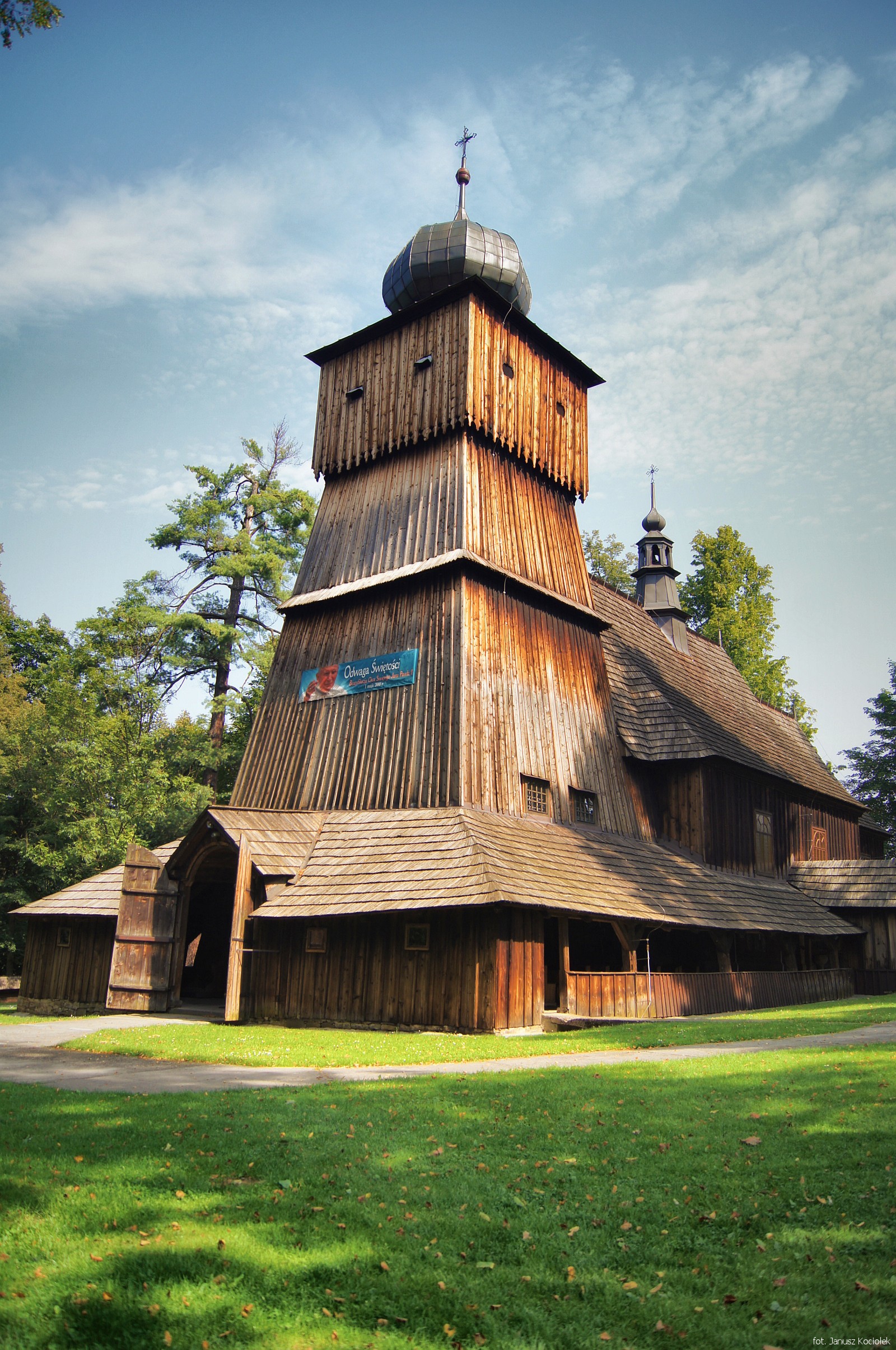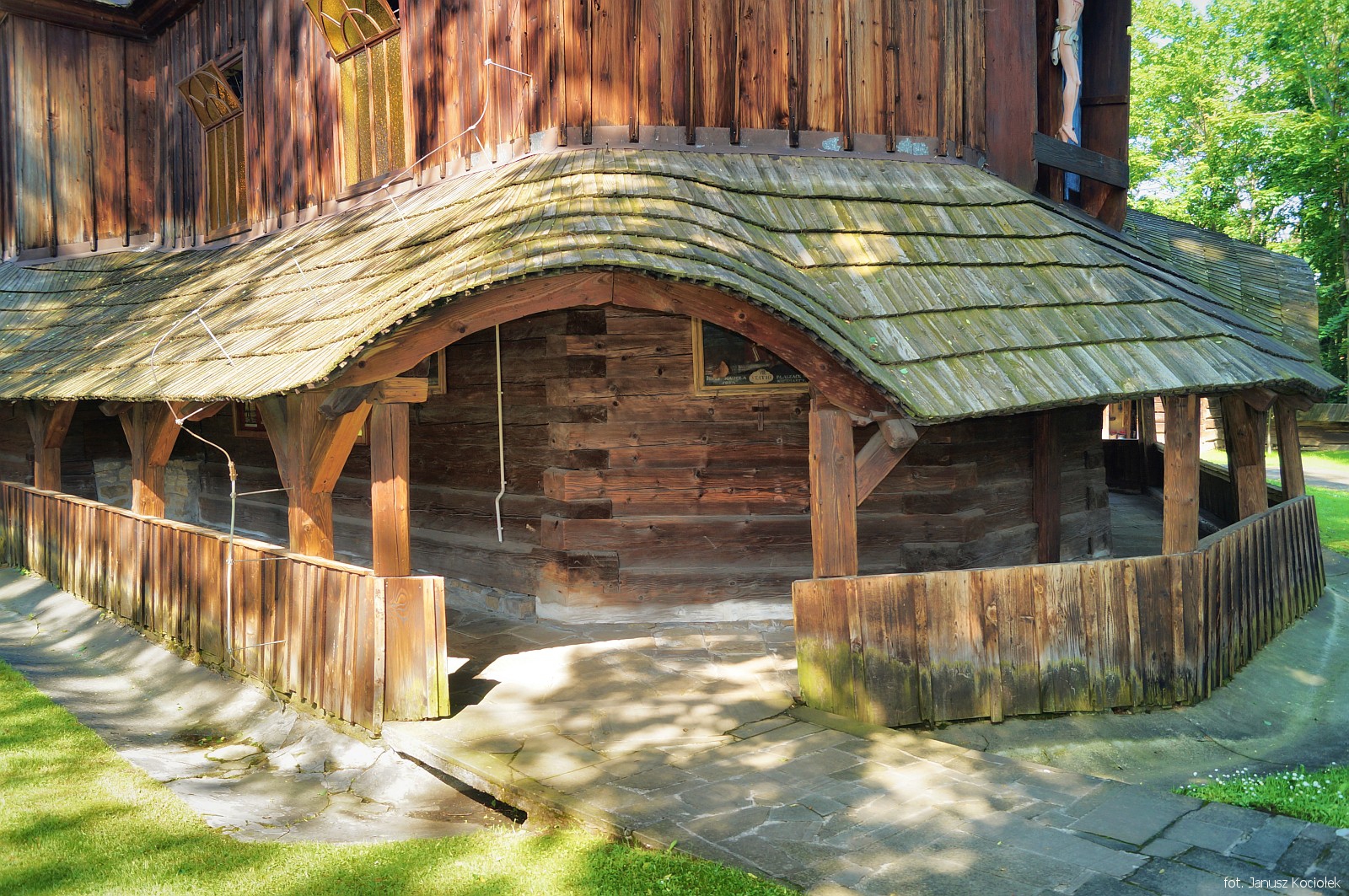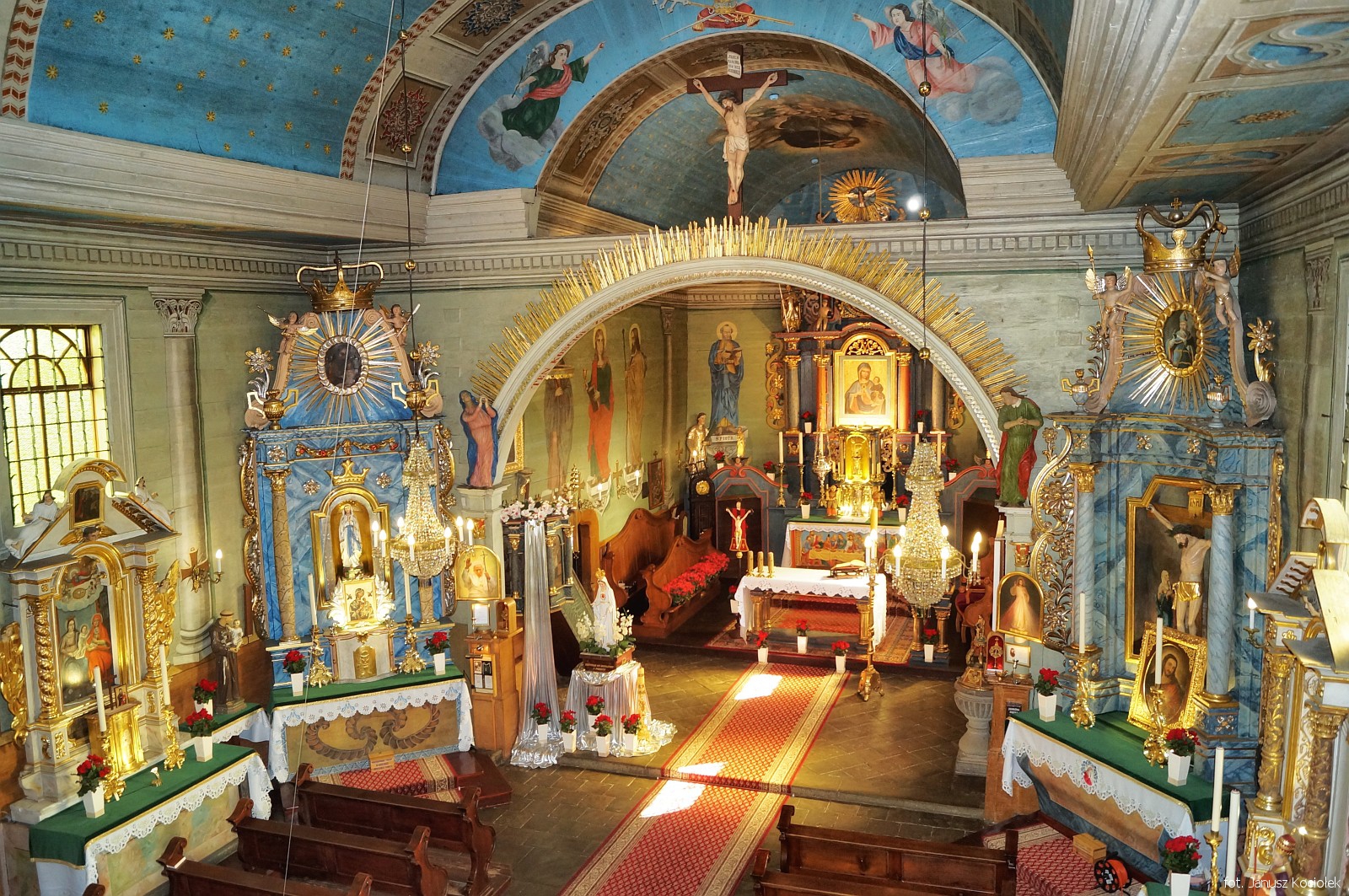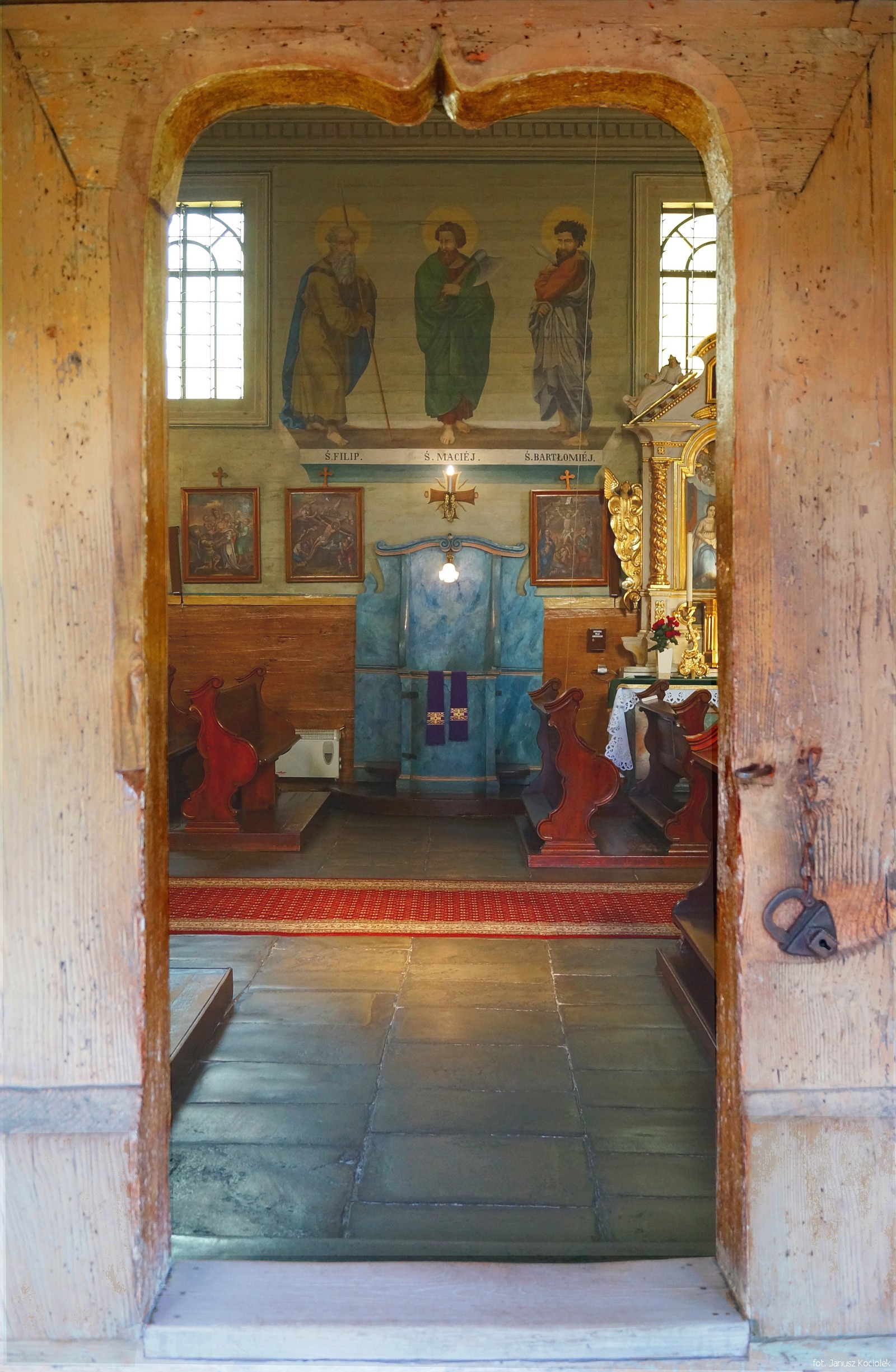The Church of St Apostles Peter and Paul, erected in the years 1789-1791 on the site of an earlier cemetery chapel, founded by Teresa of the Sulkowscy Wielopolska, is one of the most interesting examples of wooden sacral architecture in southern Poland. It is a log-constructed, oriented, one-nave building, with a tower added to the nave. The church is surrounded by characteristic canopies, in which one can see the painted Stations of the Cross from 1846, the work of the Żywiec artist Antoni Krząstkiewicz. The presbytery and nave, the canopies, and even the fence and gates are uniformly covered with shingles, which gives the whole complex a special charm.
The church interiors are accessed through two entrances with portals carved into the so-called donkey’s back. The interior is Baroque-Classical, mainly from the first half of the 19th century. In the main altar there is a painting of the Mother of God and Child, in the type of the so-called Hodigitria. It is a 17th century Baroque copy of an older, Gothic image. The altar itself is in the late Baroque style. The presbytery is separated from the nave with a characteristic double chancelopening. In the upper part there is a crucifix on the rood beam, which is supported on the side pillars decorated with semi-columns with statues of the Virgin Mary (on the left) and St. John the Evangelist (on the right).
The most interesting elements of the nave decoration are the four altars. Two of them – of Our Lady and St Sebastian – are Baroque, the other two – of Christ Crucified and The Virgin and the Child with Saint Anne – are slightly later, Baroque-Classical.
The vaults and walls of the church are decorated with polychrome from the 19th century. The vault of the presbytery shows the figure of the Virgin Mary, while the vault of the nave shows scenes of the Transfiguration and the Annunciation. The walls of the church are covered with paintings depicting the apostles.
Among other elements of the interior of the temple, the following are also worth mentioning: two stone Baroque holy water font from the end of the 18th century, a stone Baroque baptismal font and a wooden confessional from the same period, as well as a wooden Baroque pulpit decorated with figures of saints and a musical choir, supported on pillars, on which there is an organ from 1836, the work of Marcin Gracz from Pcim.




